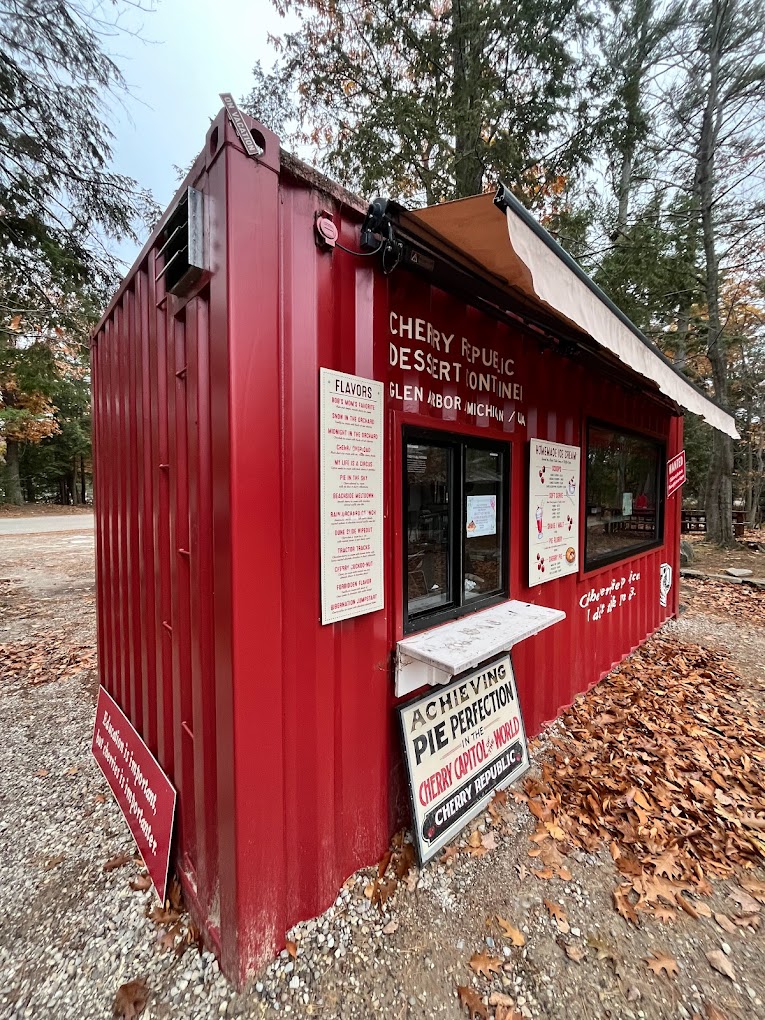Beyond the Box

Shipping containers reshape retail landscapes, redefining scalability, savings, and speed to market.
With the changing needs of consumers, the design of retail spaces is constantly evolving. Different retailers will have different considerations in the design of their brick and mortar locations and a traditional retail space may not always be an option.
Enter the chat: Shipping containers.
In recent years, shipping containers have undergone a remarkable transformation, transcending their utilitarian roots as storage units and cargo vessels. Today, these steel giants have emerged as the avant-garde pioneers of a vibrant new trend: mobile retail spaces that defy convention.
The very containers that once crisscrossed the oceans are now reborn as chic retail hubs, gracing the landscapes of sporting events or unfolding into trendy clothing boutiques. This metamorphosis is more than an aesthetic overhaul; it signifies a paradigm shift in how we conceptualize retail spaces. Gone are the days of inflated building and operating costs that traditionally burdened storefront ventures. Shipping containers have become the quintessential solution, presenting a clever blend of reduced construction expenses, heightened flexibility or mobility, and speed to market.
1. Reduced Construction Costs
The advantages are many. Not only do these repurposed containers boast a stylish and contemporary allure, but they also embody a practical means of cost-effective construction. Shipping container designs offer cost-effective construction options, saving up to 20% in building costs.1 Their adaptability allows for swift deployment and customization, enabling entrepreneurs to actualize their vision with unparalleled speed. Picture the agility of a pop-up shop materializing almost overnight, disrupting the conventional timeline associated with brick-and-mortar establishments.
Like any project, determining the exact cost of a shipping container isn’t a straightforward task, given the various factors that come into play. From the size of the container- where scaling down can decrease your cost, to buying used vs new or one-trip containers, there are several ways you can cut down on cost without sacrificing design. Another consideration is whether the location is landlocked, as areas without direct access to the sea tend to incur higher transit costs. Additionally, in the global context, prevailing events can sway container costs.
2. Speed to Market
The brilliance of this shipping container revolution extends beyond aesthetics, offering a groundbreaking approach to scalability. The design schematics of these innovative retail spaces are engineered with replication in mind. Imagine effortlessly reproducing the same sleek and efficient container-based structure in multiple locations across different states with minimal design modifications tailored to specific regional needs and permitting.
This strategic replication streamlines the overall construction process and unlocks unparalleled cost savings. By maintaining a standardized blueprint while incorporating subtle adjustments based on geographical factors, such as weather insulation desires, the shipping container retail model becomes a beacon of efficiency. This approach ensures that each new venture effortlessly mirrors the success of its predecessors, allowing for rapid expansion without sacrificing quality or compliance with local regulations.
3. Flexibility/Mobility
Thus, as retail spaces become more diverse, these containers become the go-to for attracting customers and making shopping a fun experience. The branding opportunities are virtually limitless, and customization is a treat. Due to their durability and portable nature, you can stack multiple containers or move them to another location, providing a solution for brands looking to participate in outdoor events with various locations.
Some retail spaces enforce a standardized appearance for stores to maintain uniformity in a shopping district. This limits branding choices and hinders unique retail experiences. However, businesses using shipping containers sidestep these rules, enabling them to showcase their preferred flooring, branding elements, mascots, customized wall colors, and decor. This flexibility enhances brand visibility in a permanent location or during pop-up events. Additionally, stacked containers can serve as billboards for broader exposure.
Project Spotlight:
Cherry Republic Ice Cream
Glen Arbor, MI
Our team meticulously
designed the Red Box
Creamery, a sweet addition
nestled in the heart of Cherry
Republic’s charming village
in Glen Arbor, Michigan

WHERE TO START
There are a plethora of items to consider before you dive into your first (or next) container project. The long story short is- get your architect involved early. Containers, modular builds, and all commercial spaces must go through an extensive permitting process. These processes vary from state to state, but most include a local and state review and a separate modular certification.
Energy and space planning efficiency can be challenging if
not thoroughly thought out. First, consider the following:
- How many end-users do you want to fit in the space?
- Are you storing products?
- Do you need the temperature to remain consistent?
Containers end up being smaller than expected, so think smart about what is a priority to your end-users. More insulation might mean better efficiency for hot or cold climates, but you will risk your walls closing in on your activated space to store more products or host more services.
In the realm of food service, consider the proximity of the nearest sink for dishwashing and the placement of your exhaust fan. Studio+ is developing a container for the Toledo Zoo, with an activated space on the rooftop. Upon opting to activate the rooftop, a challenge emerged as there was no space for the exhaust to exit the container. The solution involved affixing a distinct structure and disguising it as a giraffe to obscure the true purpose of the fan.
So, with any innovation, considerations must be made before fully embracing this trend. Involving
architects early in the process, navigating complex permitting procedures, and addressing customization
and space planning efficiency challenges are crucial steps. The cautionary note emphasizes that while the benefits of shipping container retail are compelling, careful planning and thoughtful consideration of specific needs are essential to avoid potential pitfalls.
Nonetheless, shipping containers transcends the traditional approach to the retail business. As the industry continues to evolve, these containers stand as avant-garde symbols of adaptability, efficiency, and innovation, reshaping the retail landscape in exciting and unprecedented ways.

Want to learn more?
Reach out to our expert, Meghan Frederick at [email protected]